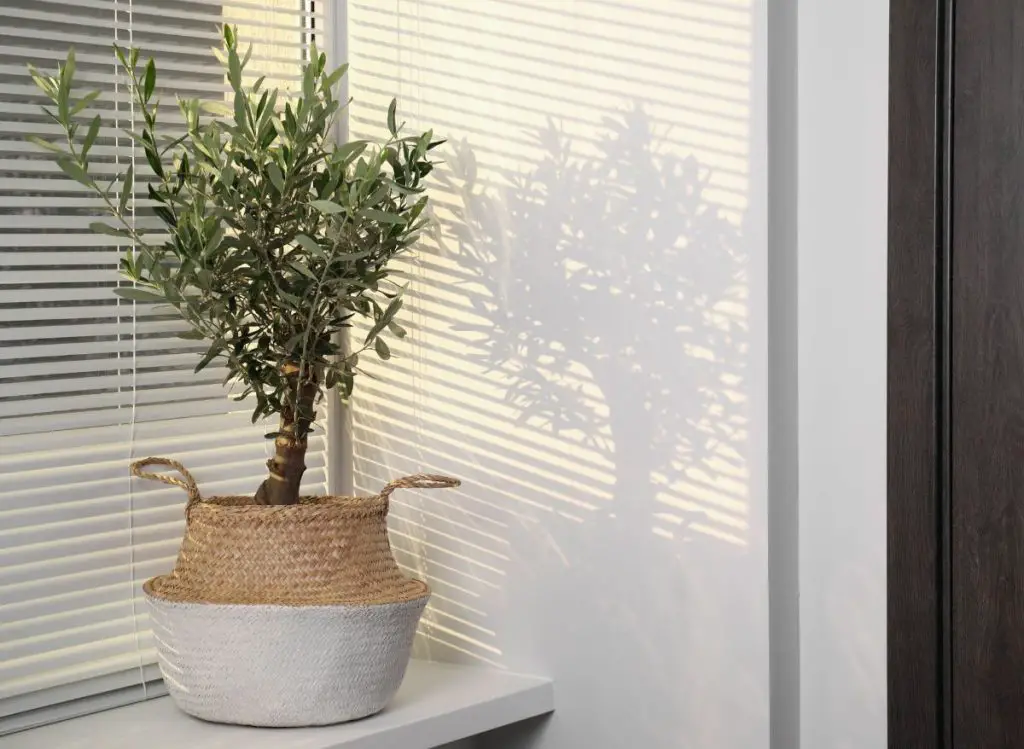
In addition to their distinctive appearance, black olive trees also offer tremendous benefits found in several studies.
Black olive trees, scientifically called Terminalia buceras, produce a small, black seed capsule and grow about 40 to 50 feet (12.2 to 15.24 meters) tall. Also, a black olive tree is a beautiful evergreen tree with a smooth trunk that holds up strong, wind-resistant branches. It will form a pyramidal shape when young, but as it ages, it will develop a very dense, full, oval to rounded crown with age. (Source: University of Florida)
Read on to find out how to grow and care for black olive trees properly. If you are interested in growing and caring for normal olive trees, I wrote a whole article where I discussed growing and caring for olive trees.
General Characteristics Of Black Olive Trees
Black olives, or Terminalia buceras, are very tolerant to salt spray and drought tolerant once fully grown. Moreover, black olive trees don’t grow fast and thrive in full sun to part shade conditions. They also prefer well-drained soils which are low in pH.
The table contains the general characteristics of black olive trees.
| Genus Name | Terminalia Buceras |
| Common Name | – Black olive – Oxhorn bucida – Shady lady black olive |
| Family | Combretaceae |
| Plant type | Tree |
| Mature size | – Height: 40 to 50 feet (12.2 to 15.24 meters) – Spread: 35 to 50 feet (10.67 to 15.24 meters) |
| Life Cycle | Woody |
| Soil Drainage | – Moist but well-drained |
| Best Soil Type | – Sand – Loam – Clay – Acidic – Alkaline |
| Sun exposure | Like the other type of olive trees, black olive trees require full sun to partial shade, about six or more hours of direct sunlight daily (Source: North Carolina State University) |
| Propagation | – Seed – Stem Cutting |
| Flower color | Creamy yellow to light brown |
| Olive trees flower bloom time | – Spring and summer |
| Drought tolerance | Black olive trees are highly resistant to drought |
| Pest resistance | Black olive trees are resistant to pests and diseases |
| Maintenance requirements | Medium to low |
| Soil pH | 5.5 to 8.5 |
| Temperature requirements | – Between 60-68 °F (15-20 °C), black olive tree might be slightly damaged at 32°F and even killed at 25°F. |
| Diseases and pests | No pests or diseases are of significant concern, but they are occasionally disturbed by: – Sooty mold and bark borer – Eryphide mites cause galls, but no control is required. |
| USDA Plant Hardiness Zone | 10 to 11 |
| Region Of Origin | West Indies |
Shady Lady Black Olive Tree Pros And Cons
There are several advantages and disadvantages to adding black olives to your garden or the landscape. Here are a few shady lady black olive tree pros and cons:
1- Unique and Charming Appearance
Shady lady black olive trees have a unique trunk, with the bark peeling off in a patchwork style, revealing grey, green, and orangey surfaces beneath.
The branches are slender and graceful, with delicate leaves that emit a silver-green hue. The tree’s allure is further enhanced by the small white flowers that appear during spring, adding a touch of elegance and charm to its appearance.
2- Adaptable Nature
The Black Olive tree can grow in diverse environments, making it an excellent choice for gardeners with varying climates. It thrives in full sun to partial shade and can withstand drought and moderate salt spray.
The tree can grow up to 40 feet tall and wide, and its roots tend to be moderate to invasive. A black olive tree is ideal for landscapes, patios, and sidewalks, and its adaptable nature makes it an excellent choice for soil remediation in degraded urban landscapes and public spaces.
3- Low Maintenance
The black olive tree requires minimal upkeep and maintenance, making it an ideal option for busy individuals or anyone looking for a low-maintenance landscape.
It thrives in various soil types, including sandy, loamy, or clay soils, and a black olive tree is tolerant of salt spray and wind. Moreover, it’s a rather hardy tree, and it’s not susceptible to many pests or diseases.
By pruning dead or diseased branches, you can keep the tree healthy, and it’ll flourish on its own with just a little watering and fertilizing.
4- Black Olives are Frost Sensitive
Black Olive trees hold a special place in many cultures and are a symbol of peace, love, and life; however, they are also frost sensitive and will be slightly damaged at 32 °F. At 25 °F, black olives might also die (Source: University of Florida)
5- Black Olives Sensitive to Some Pests And Diseases
Shady lady black olive can occasionally become infested with a tiny caterpillar, causing temporary partial defoliation. The good news is that any leaves usually lost quickly regrow.
What to read next:
- Top 5 Must-Know Companion Plants For Lantana.
- 19 Fall Vegetables To Grow In Pots With Helpful Tips on Caring for each!
- How To Effectively Plant And Grow Zucchini Plants: Everything You Must Know!
Wrapping Up
A black olive tree is a symbol of resilience, adaptability, and cultural significance. By adding it to your garden, you can enjoy its unique and charming appearance.
Additionally, the black olive tree’s low-maintenance nature makes it an attractive choice for those who have limited time, budget, or space.

